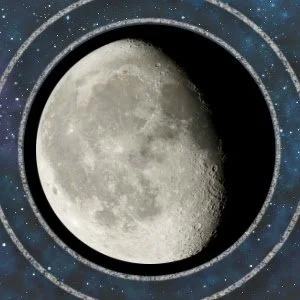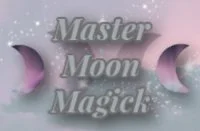Ancient peoples all over the globe were as fascinated with the moon as we are today--arguably more so! Every spiritual belief can be traced back to sun and moon worship, with the sun gods portraying a bold and enlightened spirit, and the moon goddesses pulling us deeply into our intuition. So, working with the moon is one of the oldest traditions we have here on Earth, and there are good reasons why it’s still a magickal practice utilized today.
The moon has long since been a marvel in the night sky, shining brilliantly during the full moon, turning red or darkening out the day during an eclipse. Humans have never known life without the moon and, in truth, there would not be any humans on Earth without the moon, but did you know that our moon hasn’t always been here?
Where Did the Moon Come From?
While we don’t have any way to know for certain (at least, with the technological advances we have now) how the moon came to be, there is a widely recognized theory which explains its formation and connection to Earth. To understand the formation of the moon we have to travel back to our solar system 4.6 billion years ago, which was the birth of our solar system by the way. As you can imagine, it didn’t look exactly as it looks now with planets like Mars having an atmosphere and oceans on its surface. More interestingly (I would argue), there were also likely a number of ancient planets that no longer exist in our solar system, either because they crashed into other objects or were flung out of our star system (imagine getting slingshot out of a solar system, what a way to go).
One protoplanet that is no more has been named Theia. Named for the Greek titaness who was the embodiment of sight, she married the titan Hyperion and they gave birth to three children: Helios (the sun), Eos (the dawn) and Selene (the moon). It’s widely believed that Theia crashed into Earth roughly 100,000,000 years after the birth of the solar system, which is not very long respectively. Earth absorbed some of Theia’s mass while the rest of its broken pieces were flung into orbit around Earth. Over time, Theia’s debris was pulled together and formed the moon!
Why is the Moon so Important?
Without the moon our tides would be much smaller, both low tide and high tide would be one third of its current height. Without the moon the days would be shorter and erratic. Instead of our 24 hour days they would become as short as 12 or 6 hours without the gravitational pull of the moon slowing our planet down. Lastly, the tilt of the Earth would be either too large or two small, which would result in dramatic and unpredictable weather. The current axial tilt of 23° is the reason we have predictable seasons. In short, we humans need the moon to survive (Earth would be fine without it I’m sure).
How Does the Moon Affect Us?
We are standing on a planet which shares part of its mass with its only natural satellite, so there is a deep connection--on a spiritual level-- between the Earth and the moon, as well as the moon and us humans. Not only does the moon control the tides, it controls every body of water on earth, including the blood in our bodies. People who menstruate tend to sync up with the moon, ovulating on a particular phase each month and menstruating on the corresponding phase 2 weeks later. So it goes without saying that we humans are enmeshed with the moon… whether we like it or not!
While it is the second brightest object in our sky, our moon is only the 5th largest in the solar system by mass. What that means is that there are 4 other moons that are simply bigger (Io, Titan, Calisto and Ganymede are all physically larger). What makes our moon unique is that it is the largest moon in relation to the planet it orbits. The other, bigger moons orbit giant planets like Jupiter and Saturn, so while they may be bigger than our moon, they pale in comparison to the planets they orbit.
Our moon is big (to us!), and so energetically it is far more powerful than any of the other moons in our solar system. We feel--in small and large ways--when the moon waxes and wanes; it’s a known fact that police and health care workers are slammed during full moons when the light reflected off the moon is brightest (and therefore more spiritually potent).
How to Magically Work with the Moon:
First you need to understand your personal relationship to the moon. If you menstruate you’ll want to get familiar with your body's natural ebb and flow in relation to the moon. You will also want to make note of different times throughout the lunar month when your mood and energy shift. I have a free course called the Moon and Me which will help introduce you to this concept of tracking your life as it relates to the lunar month!
Taking it a step further, magick performed during the four primary moon phases (new, first quarter, full and last quarter) is particularly potent. Since the moon reflects the light of the sun in different ways in the span of 29.5 days, different rituals and spell workings are best at different times. If you’re ready to take your moon knowledge and spell work to the next level, enroll in my Master Moon Magick master class where you’ll learn all the in depth ins and outs of moon magick. Plus, your enrollment is evergreen, so you can watch the master class as many times as you like! It’s a resource you’ll come back to over and over again.





